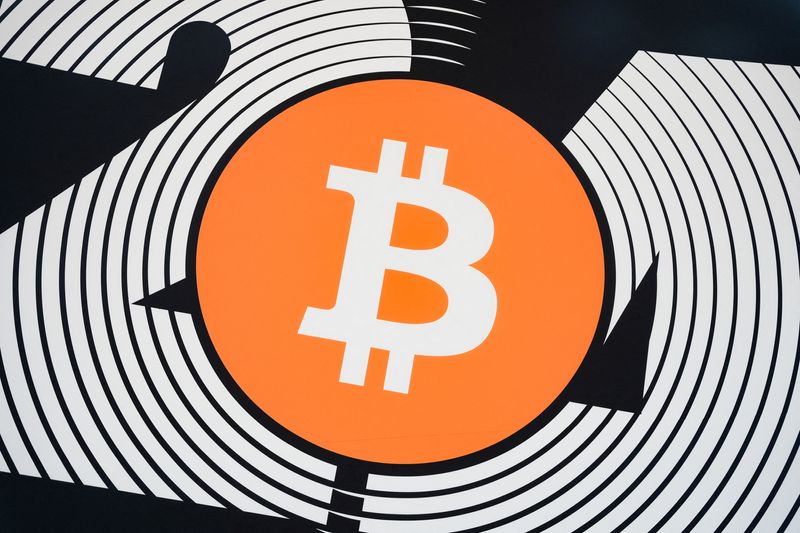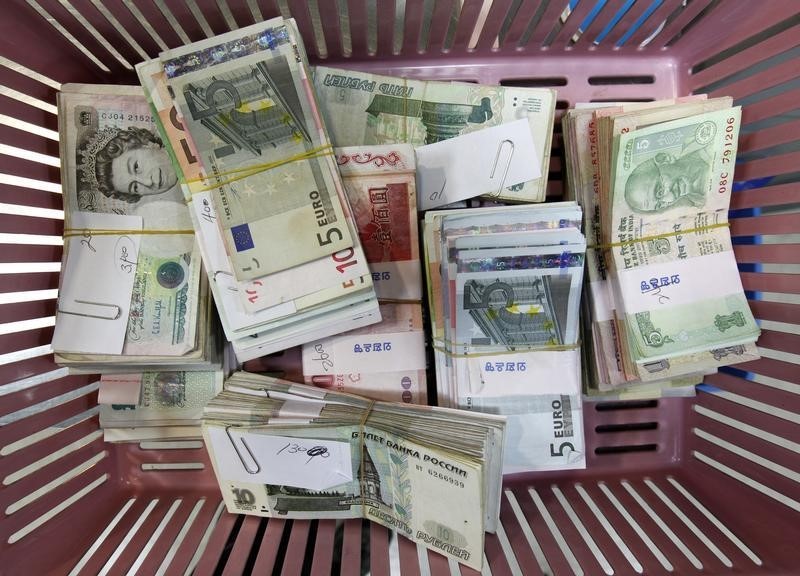(Reuters) – Breaking the $100,000 barrier raises the prospect of the cryptocurrency going mainstream. US inflation data will show how much pressure there is on the Fed to adjust rates and central banks in Europe, Australia and Brazil meet.
Here’s what to watch for next week: Marcela Ayres in Brasilia, Kevin Buckland in Tokyo, Ira Iosebashvili in New York and Dhara Ranasinghe and Amanda Cooper in London.
1/ FOUR, AND COUNTING
For ECB policymakers, their last meeting in October must seem like a lifetime ago.
Since then, Donald Trump’s victory in the US election means the eurozone faces new economic pain, with likely tariffs, and governments in heavyweights Germany and France have collapsed, with the latter embroiled in its second political crisis in six months. All that has dealt a blow to sentiment in a bloc where business activity is deteriorating – and the euro has slumped.
The ECB, which is also no stranger to difficult times, is expected to cut its interest rate by a quarter of a quarter point on Thursday, with more cuts expected.
A pick-up in inflation means that a larger interest rate cut is unlikely. And yes, you guessed it: ECB chief Christine Lagarde will likely emphasize caution and data dependence.
2/ A CUT AND A HARD PLACE
The Australian central bank, which meets on Tuesday, is in a difficult position. The economy is sputtering, the currency is at its lowest level in four months and yet inflation is persistent enough to make repeated interest rate cuts unlikely.
The chances of a quarter-point cut are less than 15% and it is expected to take until July for rates to drop even 50 basis points.
The Bank of Canada, on the other hand, appears ready to meet investor demands for more cuts. It has said inflation is a thing of the past and more cuts are in the offing, leaving the market divided over whether the December 11 meeting will deliver a 25 or even 50 basis point cut.
Then there is the most forgiving central bank of the G10: the Swiss National Bank. With inflation at 0.7%, interest rates are expected to be cut by 50 basis points on December 12.
3/ NO HURRY
Markets predicting the trajectory of Federal Reserve policy in the coming months will get a U.S. inflation reading on Wednesday. The Fed has cut 75 basis points (bps) from interest rates since September, after months of cooling inflation. Rates are expected to be cut by another 25 basis points later in December.
But the path ahead is less clear. The economy has proven stronger than expected, and Fed Chairman Jerome Powell has said there is little reason to rush the pace of cuts.
A strong reading could reinforce this view, potentially triggering another bond sell-off and strengthening the dollar if investors decide to further reduce bets on how much the Fed will cut next year. Economists polled by Reuters expect consumer prices to rise 0.2% in November, matching the increase in October.
4/ Bitcoin outbreak
There was something inevitable in Bitcoin’s record rise above $100,000 following Trump’s election promises to make America “the crypto capital of the planet.”
But it did so in resounding fashion, rising from below $99,000 to $103,619 in two hours before catching its breath. The catalyst may have been a confirmation of Trump’s choice of crypto veteran Paul Atkins to lead the SEC. Of course, $100,000 is just a number, but one that believers and skeptics alike consider a major milestone in Bitcoin’s 16-year journey to legitimacy.
Remember, though, that its history is written in breathless rallies and reversals. While figures like $150,000 are already being mentioned for 2025, the token is overbought on the daily, weekly, monthly and quarterly charts.
5/ FINAL ACT
Brazil’s central bank will hold its final meeting on Wednesday under Governor Roberto Campos Neto, targeting a sharper increase of 75 basis points after two rate hikes that brought yields to 11.25%.

Campos Neto, who was due to hold a news conference on December 19, said a positive fiscal shock could ease pressure on the exchange rate and long-term interest rates in Latin America’s largest economy. But the government’s widely expected fiscal package disappointed markets and pushed up risk premia on key assets.
The Brazilian real has weakened about 20% against the dollar this year, and strong economic resilience – evident in the third quarter – is fueling inflation concerns. As policymakers grapple with mounting challenges, Congress is debating measures to rein in spending and rein in debt growth.
(Graphic by Sumanta Sen, Kripa Jayaram and Prinz Magtulis, compiled by Karin Strohecker, editing by Barbara Lewis (JO:))


